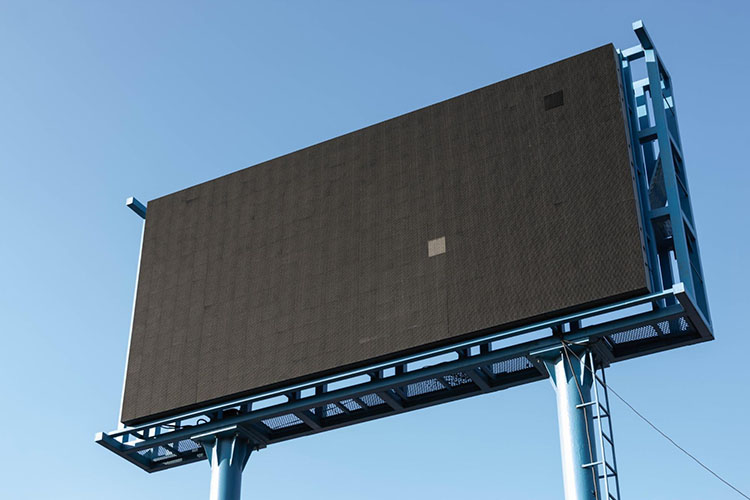We live in a world full of unique and engaging ads. As a business owner, you might draw inspiration from ads that take on so many forms, designs, and media. There are so many possible ads to run and so little time (and money) to spare.
The idea of running ad campaigns is frightening, and the idea of designing media to accompany them is even worse. It’s a stressful job for the uninitiated, and it comes with an unsettling feeling that you’ll make a very costly mistake.
On top of the internal pressure we associate with this crucial marketing activity, it’s also hard to come up with designs and captions that stand out. There are already so many ads around us and it seems almost too easy for our efforts to be ignored.
Many tradies feel the same way, which is why we created this article. Our long experience with marketing for tradies from different groups gives us insight into what works and how to build stellar marketing from scratch.
It’s an easy read, and packed with tips to give you an edge when designing your next ad.
Top 5 Advertising Tips for Contractors in 2020
- Know What to Advertise
- Use Compelling Language
- Work an Emotional Tone
- Go for Digital Ads
- Be Patient
Tip # 1 – Know What to Advertise
When planning for your advertising endeavours, it pays to begin with the end in mind. Advertising is like any communication, and the first step is to know what message you want to send.
As a baseline, it’s crucial to have a sense of what your brand positioning is. Put simply, brand positioning is how you want your business to be perceived in the market.
The easiest way to determine this is to know what qualities you want to be associated with. For example, it’s to be able to say, “when customers think of reliability, I want my company to pop to their minds.”
Apart from your overall image, your business is bound to have a number of features worth showing to the public, but it helps to narrow them down to your best ones.
We have a couple of ideas to help you figure this out.
1. Feature any awards or distinctions.
If you ever received recognition in your field or community, don’t be shy to make it known. Success stories are attention-grabbing and few businesses can boast having awards, so if you count among the lucky set, it’s a great inclusion in your advertising.
Being successful in your field proves that you know what you’re doing and that there are reputable people who’ve taken notice of the fact. People who need your services will have less of a reason to doubt the quality of your service—you can win them over right away.

2. Identify your customers’ needs
Pain points are your customers’ problems, needs, and frustrations. Knowing the most prominent ones can help set the pace for your ad design. Doing so sends a message that you’ve done your homework when it comes to understanding your customers.
Ad messages that are customer-centric are highly recommended in the service industry because they feel more authentic and empathetic. Alongside your desire to generate sales should be a genuine instinct to solve problems and boost each client’s quality of life.
Pick a specific pain point and show how you aim to address that. By doing this, you emphasise the idea that you put your customers’ interests first.
Tip #2 – Use Compelling Language
This ties back to the idea of pain points: your customers have issues and hesitations, so your language should put them at ease. If you claim to be a source of help for your customers, show it by using words that make them feel it. This is establishing rapport without direct contact.
When choosing a contractor, people need to trust that the people they’re considering are honest experts who care about the quality of their work. There’s very limited space in an ad to show all those qualities, so economising language is key.
Keep your ad write-ups brief and direct. Focus on only the essentials: your main message and contact information. Save the fine details for your website or sales call.
Using words like trusted partner, dedicated to quality, and others that communicate credibility can do wonders. Learn more about the power of words in advertising in this article.
Tip #3 – Work an Emotional Tone
The best advertisements evoke an emotional feeling. For contractors, the best ads project the feeling of strength and security. After all, your main task is to build a structure that’s meant to last.

Likewise, other emotions can factor in as well. If you’re in home building, images of happy families and the passage of time can appeal to their emotions. Just mind the general rule that people are more likely to pay attention to ads that capture their values and preferences.
If you build commercial structures, then images of profit, growth, and stability will appeal to business people looking to expand their workspaces. Images of camaraderie may appeal to those who hold team effort as a foundation of their organisation.
Emotions play a big role in how consumers make the choices they make. If you’re able to tap into their innermost needs, wants, and values with your ads, they’re more likely to engage with what you have to offer.
Download your free ebook on how to create a buyer persona + templates
Tip #4 – Go for Digital Ads
Digital ads are very similar to traditional ads in the sense that they contain visuals and text, and appeal to the same mental processes and psychological understanding of customers.
Since the digital world has become a second reality, ads are also being delivered in this space in the same manner—by grabbing our attention while we’re busy doing something else.
However, they’re also different in a few significant ways. Here are some of the key features of digital advertisements:
1. They’re more precise
Unlike how a billboard rolls the dice on the chance that a passerby happens to fit the mindset of its target audience, digital ads allow you to push your ads directly to the people who are most likely to convert.
There are ad parameters that you can limit to a certain location, age group, and even a set of interests. You can easily get this data by doing some research on the key features of your desired market.
This makes your advertising more specific, and your ROI easier to calculate.
It also makes it easier for you to play around with targeting different audiences with the click of a mouse—you don’t need to break the bank running print ads in various magazines to see what sticks.

There are also tools like custom and lookalike audiences that you can use to experiment with your audience. Custom audiences are people who have already interacted with your page. You can use your current customer database to target these people with your advertising for new promotions.
Lookalike audiences, on the other hand, can use your existing dataset and find a completely new audience that possesses the same qualities and interests to target. Done right, these tools can help you capture more leads.
2. They can reach more people
Social networks are large, and they’re only growing by the day. As of this year, there are 1.6 billion active users on Facebook, 600 million on Instagram, and 149 million on YouTube. These are only statistics for the main social channels; there are many more platforms out there.
Because people are always on social networks, these platforms become vital search tools as well. You can leverage the power of these numbers by understanding where your customers are, what they like, and how they behave online.
If you’re just getting started on social networks, learning the fundamentals of advertising on Facebook and Instagram will go a long way, as they’re home to the majority of social users.
3. They yield faster results
Customers these days are constantly busy with one thing or another, and they’ve grown used to instant gratification. This means that the shorter the path they have to take to reach you, the better.
With traditional ads, customers have to pull out their phones to dial your number or open up their computers to send you an email.
With digital ads, however, calls-to-action can already be linked to the ads. A “call/message now” link attached to your ad means they can complete the journey with one click. It takes seconds to go from awareness to engagement in the marketing funnel.
4. They’re easier to track
Digital campaigns are easier to experiment with because you get instant feedback with regard to the performance of your campaign. Facebook, for example, has a built-in analytics tool that will provide you with information on your engagement rates, your reach, and other metrics that matter.

With a data-driven approach, you can decide how long you want to wait before discontinuing or tweaking your ad campaign based on the key performance indicators you’ve determined. Use the data you gather to assess and optimise your campaigns.
Having this quick feedback will also allow you to iterate your strategy by experimenting with audience, targeting, budget size, and your creative elements. To effectively test what works, you can run split or A/B testing for advertising materials that have the same intent, but with different messaging or form.
One overall tip we have for digital ads is to make your ad design consistent with your website’s design. It helps with overall cohesion and better brand recognition—customers enjoy consistent experiences across platforms.
Tip #5 – Be Patient
Choosing to advertise will definitely produce more results compared to doing nothing. But remember that before you get to the results, it takes time and patience with the process to get there. For digital and (mostly) traditional ads, returns can take a while to materialise.
While some might find themselves running very successful campaigns in a week’s time, those cases are outliers rather than the rule. Don’t be discouraged if you’re not getting leads and conversions instantly.

However, don’t hesitate to drop ads that simply aren’t working despite your best efforts. Trust the data and use it to figure out your next strategy in case the first one doesn’t stick. Eventually, you’ll develop your own benchmarks for successful ads and get better at gauging as you go along.
Whatever strategy you decide on, a good rule of thumb for testing is to run it for a period of a month (if you’re going for traditional ads like billboards), or a week (if you’re going for digital ads) to see if your ads generate inquiries.
If they fail to meet your objectives within the set time period, you can decide to either tweak the ad material or swap it for a new campaign altogether. It’s best to have a ready list of possible strategies to test just in case. It’s normal for initial campaigns to not yield the desired results at the start. It’s better to fail sooner rather than later, so you can learn how to improve right away.
Supposing your initial campaign doesn’t completely fall flat but only generates a handful of inquiries, it’s possible that you’re doing something right, and that the strategy just needs a little more fine-tuning. If this is the case, we suggest testing different photos, tagline, and captions.
Finally, if you get it right immediately and land plenty of inquiries, study the data and draw insight from them. By doing this, you will see what you did right and you’ll be able to reproduce your results over time, as you run more ad campaigns.
Conclusion
These five tips are designed to help you hit the ground running with different forms of advertising. While running ads can be difficult, but it only gets harder without the right fundamentals and guidance.
Take your advertising activity slow, and try not to test everything at once. Multi-channel advertising is a great goal for down the line, but you should prioritise mastering each one in turn.
Finally, good advertising campaign ideas don’t come overnight. Be patient, collaborate closely with your staff, and always keep your brand in mind: your business has all the elements of a great ad—it’s just a simple matter of paying attention to what you do best, and communicating them well.







